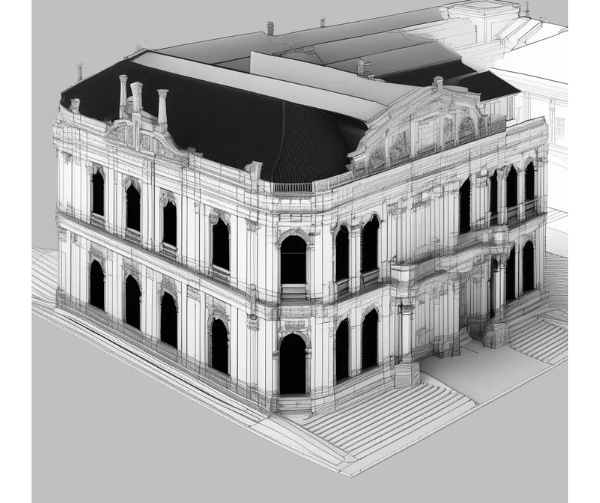Once the laser scan data was delivered to ProtoTech’s team, our highly skilled engineers and architects used advanced BIM software like Revit to convert the point cloud data into a fully functioning 3D model. This model allowed for an intricate analysis of the cathedral’s architectural features and structural integrity.
Step 1: Importing Point Cloud Data
The first step in the process involved importing the point cloud data into Revit. Revit’s advanced features allow for seamless integration of point clouds, which serve as a reference for creating precise 3D models. Each point in the cloud represents a specific location on the cathedral’s surface, enabling our team to model its complex geometry with extreme accuracy.
Step 2: Model Creation and Detail Replication
Once the point cloud data was imported, the ProtoTech Solutions team began the task of recreating the cathedral’s geometry in BIM. Using Revit’s parametric modeling tools, we modeled everything from the building’s exterior walls to its internal features such as columns, arches, and windows.
Revit’s versatility allowed us to replicate the cathedral’s most intricate features, ensuring that every historical element was captured and preserved in the digital model. For example, we were able to:
- Model the cathedral’s soaring arches and ribbed vaults
- Recreate the complex geometry of flying buttresses
- Accurately replicate the stained glass windows, including their unique shapes and dimensions
- Document structural deformities caused by age and environmental factors
Step 3: Planning for Future Maintenance
In addition to providing a digital blueprint for immediate restoration, the BIM model generated by ProtoTech Solutions will play a vital role in the long-term preservation of the cathedral. The digital twin can be updated over time to reflect ongoing changes, repairs, and restorations. This ensures that future restoration teams will have an accurate and up-to-date representation of the cathedral, making their work more efficient and less invasive.
Moreover, the BIM model can be used for predictive maintenance. By regularly scanning the cathedral and comparing new data with the existing model, maintenance teams can identify potential structural issues before they become critical, helping to preserve the cathedral for future generations.
